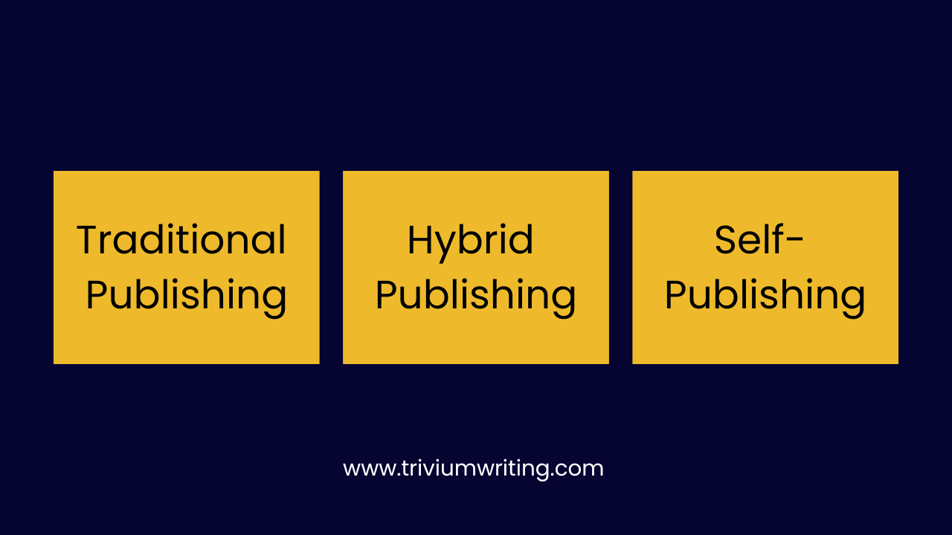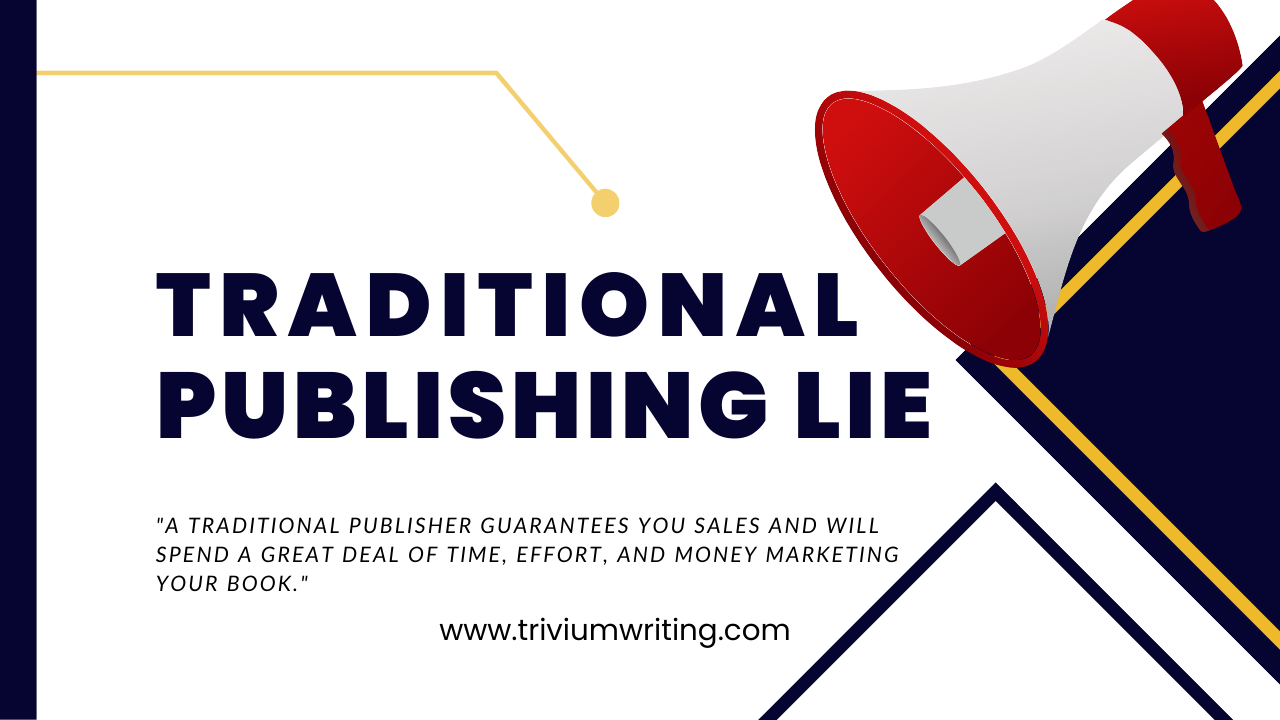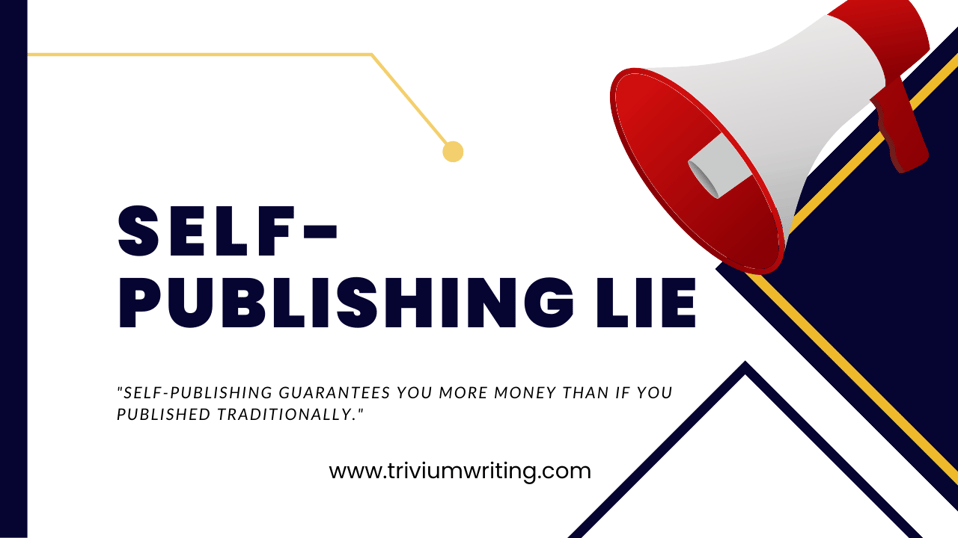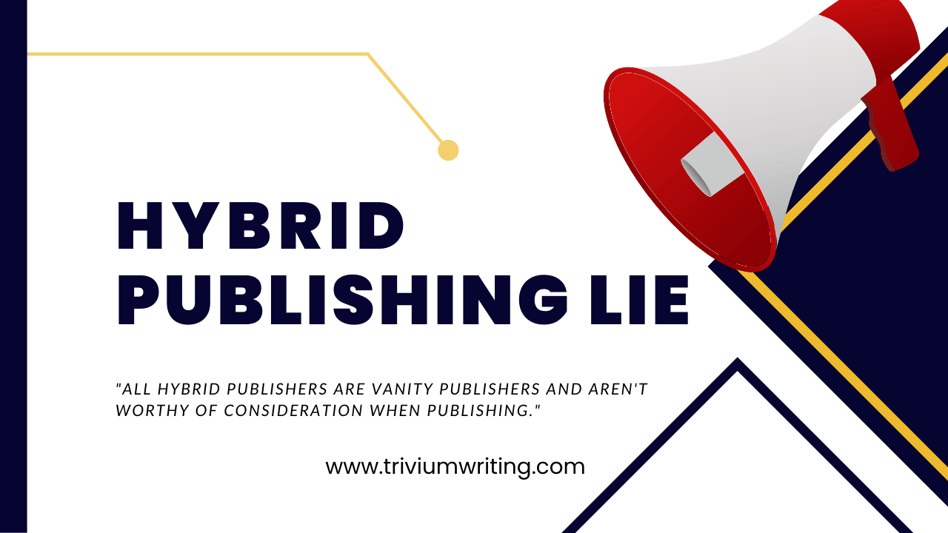The Truth About Traditional Publishing vs. Self-Publishing + 3rd Option
If you're planning to publish a book, you've likely been caught in the crossfire of conflicting advice. Some say traditional publishing is the gold standard. Others swear self-publishing is the only way to go. And then there’s hybrid publishing—often misunderstood and rarely explained properly.
After writing several books myself and guiding over 130 authors through the publishing process, I've seen firsthand how confusing and emotionally loaded these choices can be. I've also seen authors waste months—sometimes years—pursuing the wrong path because they trusted the wrong advice.
This article is designed to give you the full picture—no hidden agendas, no marketing spin. Just a transparent, experience-backed breakdown of traditional publishing, self-publishing, and hybrid publishing so you can make the best decision for your goals, your timeline, and your book.
No time to read this article and simply want expert advice? Book a free call here.
Table of Contents
- The Big 3 Publishing Paths Explained
- The 3 Big Lies People Still Believe About Publishing
- Traditional vs. Self-Publishing vs. Hybrid: A Brutally Honest Comparison
- The 5 Questions to Ask Before You Publish a Book
- What Most Publishing Gurus Don’t Want You to Know
- Success Stories Across All 3 Models
- Publishing Advice You Can Actually Trust
The Big 3 Publishing Paths Explained
Before you choose how to publish your book, you need to understand what each path actually involves—not the version filtered through marketing messages, social media posts, or outdated assumptions.
Each publishing model—traditional, self, and hybrid—has strengths, weaknesses, and trade-offs. And none of them is “better” across the board. What matters most is alignment: your publishing path should reflect your goals, timeline, budget, and appetite for creative control.
Let’s break them down clearly.

What Is Traditional Publishing in 2025?
Traditional publishing is the model most people think of first. A traditional publisher (like Penguin Random House or HarperCollins) buys the rights to your book, pays you an advance, and handles everything: editing, cover design, printing, distribution, and some marketing.
You’ll typically need a literary agent to pitch your manuscript, and the process is highly competitive. Traditional publishing houses receive thousands of submissions a year and accept only a small percentage—often from authors with existing platforms or unique, timely ideas.
For some authors, especially those looking for credibility, bookstore placement, or career authorship, traditional publishing still offers real value. But here's the reality:
-
Advances are often low (many first-time authors receive under $5,000)
-
You’ll earn 10–15% royalties on book sales (compared to 35–70% in self-publishing)
-
You’ll have limited creative control over your book’s title, cover, and even content
-
You’ll still be responsible for a significant portion of your own marketing
If you land a traditional publishing deal, consider it a strategic partnership—not a golden ticket. It's a model that works best for authors who want wide reach, are patient with long timelines (12–24 months), and are willing to give up control in exchange for industry backing.
What Is Self-Publishing—and Why It’s Not Just DIY Anymore
Self-publishing means you take full ownership of the publishing process. You write the book, then either handle or outsource editing, formatting, cover design, and marketing. You’re the publisher.
With platforms like Amazon KDP, IngramSpark, and Draft2Digital, it's never been easier to get your book out into the world. And because you're the one investing upfront, you keep much more of the profits—usually between 35% to 70% royalties per book sold.
But the myth that self-publishing is a shortcut to easy money is just that—a myth. Here's what self-publishing really means:
-
You have complete creative control, which is empowering—but also risky if you don’t know what you’re doing
-
You must either learn the publishing process or hire professionals—editors, designers, marketers—to help
-
Book marketing is 100% on you: no audience, no sales
-
Credibility can be harder to earn without the validation of a known publisher
Still, many self-published authors succeed—and some even outsell traditionally published peers. If you’re an entrepreneur, speaker, coach, or consultant, self-publishing offers speed, flexibility, and control that can be ideal for your business goals.
It’s not easier—but it’s faster, and it puts you in charge.
Hybrid Publishing: The Often-Misunderstood Middle Ground
Hybrid publishing combines elements of both traditional and self-publishing. You pay a publishing company to produce your book, but in return, you get a professional team—editors, designers, project managers—and in some cases, access to bookstore distribution and media opportunities.
Unfortunately, hybrid publishing is often confused with vanity publishing—which gives the entire model a bad reputation. But they’re not the same.
According to the Independent Book Publishers Association (IBPA), a legitimate hybrid publisher:
-
Is selective about submissions
-
Operates under its own ISBNs and imprint
-
Offers transparency in pricing and royalties
-
Pays authors above-standard royalty rates
-
Meets industry standards in design, editing, and distribution
At Trivium Writing, we’ve worked with hybrid publishers like Morgan James Publishing and Page Two, and we’ve seen hybrid publishing work well—especially for professionals who want a polished product without chasing agents or managing contractors.
The downside? Cost. High-quality hybrid publishing can run anywhere from $10,000 to $50,000 or more, depending on the services included.
But if you're looking for a hands-off experience that still gives you some creative control, hybrid publishing may be the right fit—if you choose the right partner.
The 3 Big Lies People Still Believe About Publishing
If you've spent any time Googling “how to publish a book” or scrolling through author communities, you've likely heard confident opinions—often conflicting ones. But here’s the uncomfortable truth: most of what people say about publishing is colored by their own agenda.
Traditional publishers, self-publishing gurus, and hybrid publishing salespeople all have a vested interest in making their model seem like the best (or only) option.
Over the past decade, I’ve coached and ghostwritten for authors who chose every kind of publishing path. What I’ve learned is that the biggest obstacle isn’t picking the wrong model—it’s believing the wrong story about what that model can do for you.
Let’s debunk the three biggest lies I still hear in the publishing world.
Lie #1: “Traditional Publishers Will Handle Everything For You”
This myth is dangerously outdated.
Yes, traditional publishers used to invest heavily in marketing, but today, unless you're already famous or have a massive platform, most of the marketing responsibility falls on you.

Here’s what traditional publishers typically do provide:
-
Editorial guidance and book production
-
Basic promotional materials
-
Trade advertising and industry outreach
-
Distribution to brick-and-mortar stores (which is valuable!)
But unless your name is already on bestseller lists or you've secured national media coverage, they're not going to build your audience for you.
What most authors don’t realize is that a publisher is betting on your book. If it doesn’t perform quickly, their resources move to the next project. As one traditionally published author told me, “I felt like the publisher was waiting to see if I could generate enough buzz before they invested more.”
If you're pursuing a traditional publishing deal, understand this: the deal itself is just the beginning. You're still expected to show up, promote, and often invest your own money in a publicist or marketing team.
Lie #2: “Self-Publishing Will Make You More Money”
This lie is more seductive—and more dangerous.
The argument goes: "Why settle for 10–15% royalties in traditional publishing when you can earn up to 70% by self-publishing on Amazon?"

That part is true. But it leaves out one critical detail: earning more per book only matters if you’re actually selling books.
Let me be blunt: the vast majority of self-published books sell fewer than 250 copies. Why? Because authors underestimate how much work it takes to get visibility, build trust, and drive sales.
I’ve worked with self-published authors who sold thousands of copies and made six figures. But they either:
-
Had an existing audience
-
Invested in book marketing
-
Treated the book like a business launch
If you don’t have a platform, aren’t willing to invest in marketing, and just hope Amazon will do the heavy lifting—you’ll be disappointed.
Self-publishing is a long game. You own more, keep more, and control more—but you also carry all the risk.
Lie #3: “Hybrid Publishing Is Just Vanity Publishing in Disguise”
This lie has some truth in it—but not enough.
Yes, there are bad hybrid publishers out there. They charge outrageous fees, cut corners, and offer little value in return. But to paint all hybrid publishers with the same brush is a mistake.

The difference is business model and transparency.
A vanity press tries to look like a traditional publisher. They’ll say things like “we’ve selected your book” when they accept almost everyone. Their contracts are vague. They overcharge. And they rarely deliver professional quality.
A legitimate hybrid publisher will:
-
Be upfront about costs
-
Show you exactly what you get for your investment
-
Offer professional editing, design, and distribution
-
Give you a higher-than-standard royalty rate (typically 40–60%)
-
Not require you to give up full ownership of your rights
I once worked with an author who published through a hybrid model and ended up landing national media coverage, paid speaking gigs, and corporate clients. Why? Because she chose a reputable publisher, invested in quality, and understood her goals.
So yes—you have to be cautious with hybrid publishers. But writing them off entirely could mean missing out on a path that blends speed, quality, and support.

Traditional vs. Self-Publishing vs. Hybrid: A Brutally Honest Comparison
When aspiring authors come to me asking, “What’s the best publishing route?”—my answer is always the same: It depends.
There’s no single “best” publishing model. But there is a best fit for your goals, timeline, budget, and personality.
Whether you're a first-time author, a business owner writing a lead-generation book, or a professional looking to build authority, this chart gives you a no-nonsense breakdown of the pros, cons, and realities of each option.

The Publishing Paths Comparison Table
| Feature | Traditional Publishing | Self Publishing | Hybrid Publishing |
|---|---|---|---|
| Upfront Cost | $0 (publisher pays) | $1,000–$10,000+ | $10,000–$50,000+ |
| Royalties | 10–15% per book sold | 35–70% (varies by platform) | 40–60% (depends on publisher) |
| Timeline to Publish | 12–24 months | As fast as 2–6 months | 6–12 months |
| Creative Control | Low — publisher decides title, cover, content changes | Full — you have the final say | Shared — you retain input with professional guidance |
| Distribution | Bookstores, libraries, online retailers | Mostly online (Amazon KDP, IngramSpark) | Online + selected bookstores |
| Marketing Support | Limited — mostly on you | All on you | Collaborative — some built-in marketing |
| Ownership of Rights | Publisher owns most rights | You own everything | You usually retain rights (check contract) |
| Barrier to Entry | High — need agent, proposal, approval | None — anyone can self publish | Medium — you pay, but must meet quality standards |
| Perceived Credibility | High (especially for business & media) | Variable (requires strong positioning) | Moderate to high (depends on publisher's reputation) |
Quick Realities (Based on Helping 130+ Authors)
-
Traditional publishing is ideal if you want credibility and reach, don’t mind waiting, and are okay giving up control.
-
Self publishing works best for authors who want speed, profit margin, and creative control—and are willing to do the work (or hire professionals).
-
Hybrid publishing is a strong choice for professionals who want a high-quality book without chasing agents or managing freelancers, and who can afford the upfront investment.
Still not sure which path fits your book?
Book a free strategy call to get clarity on which publishing model aligns with your goals.
The 5 Questions to Ask Before You Publish a Book
Before you obsess over royalty rates or which publishing company owns the rights, ask yourself a far more important question: What do I want this book to do for me?
Over the years, I’ve seen too many authors get caught up in industry myths instead of aligning their publishing decisions with their actual goals.
Here are the five questions I always ask my clients before they choose a publishing path:
1. What’s the primary goal of your book?
Is your book a credibility builder? A marketing tool? A legacy project? Are you hoping to land paid speaking engagements, media appearances, or new clients? Or do you just want to see your book on shelves?
- If you’re building a business or personal brand, self publishing or hybrid publishing may offer more flexibility.
- If you want literary prestige or bookstore visibility, traditional publishing could be the better choice.
2. Do you have an audience or platform?
Your existing audience is one of the biggest predictors of publishing success—especially if you self publish.
A self published author with a few thousand loyal email subscribers will usually outperform a traditionally published author with none.
Even traditional publishers now expect authors to bring a platform to the table.
- If you already have an audience, you hold leverage—in any publishing model.
- If you don’t, consider building your audience before you publish or choose a path that supports that growth.
3. How much time (and energy) are you willing to invest?
Publishing a book—any way you do it—is a project. It takes time, effort, and decision-making.
-
Self publishing requires project management, hiring professionals, or learning the skills yourself
-
Traditional publishing means pitching, waiting, and sometimes rewriting
-
Hybrid publishing is faster and more hands-off, but still requires input and marketing on your part
Ask yourself: Do I want to run the publishing process—or delegate it to an expert team?
4. Are you okay giving up creative control?
This is where things get real.
Traditional publishers have the final say on your book’s title, cover design, back cover copy, and even the structure of your content. You may not love every change—but you’ll likely have to accept it.
Self publishing gives you complete creative control—but that means you’re responsible for everything, including how good (or bad) your book looks.
Hybrid publishers offer a middle ground: they guide you with industry expertise while giving you a strong voice in the process.
Be honest: Is creative control a non-negotiable? Or would you trade it for support and reach?
5. What’s your budget—and what are you willing to invest?
Let’s be clear: someone always pays for publishing.
If you work with a traditional publishing house, they pay—but they also keep the majority of profits.
If you self publish or go hybrid, you pay upfront, but keep more in return.
Self publishing can be done on a shoestring, but if you want professional results, expect to invest in editing, cover design, formatting, and book promotion.
If you’re thinking long-term (business leads, speaking fees, back-end sales), your book should be an investment—not just a cost.
These five questions are where real clarity begins. Forget the noise. Forget the hype. Your answers here will tell you exactly which publishing path fits your vision.
Need help answering them? Book a free clarity call and let’s talk it through—no pressure, no pitch, just real guidance.
What Most Publishing Gurus Don’t Want You to Know
The publishing industry is full of advice—most of it given by people trying to sell you something.
Traditional publishers want you to believe they're the gatekeepers of credibility.
Self-publishing coaches want you to think you’d be crazy to give up your rights.
Hybrid publishers want to position themselves as the best of both worlds (while charging $20K+ for the privilege).
Here’s what none of them will say out loud: there is no universally “right” way to publish a book. There’s only what’s right for you.
I’ve worked behind the scenes of all three models—as an author, a ghostwriter, and a publishing consultant for over 130 clients. I’ve had traditionally published clients who wished they had self-published. I’ve had self-published authors land national press. I’ve had hybrid authors hit Amazon bestsellers in niche markets.
Here’s what I’ve learned:
1. Most publishing professionals have a limited perspective
A traditional publisher has spent their whole career in legacy publishing. Of course they’ll downplay self publishing or hybrid models—they’ve never seen one work well.
A self publishing coach might have scaled a 7-figure business helping authors launch on Amazon. Of course they’ll claim traditional publishing is outdated.
Even hybrid publishers often cherry-pick success stories without discussing the huge upfront investment involved.
That’s not malicious—it’s just human nature. People believe what works for them must work for everyone. But that’s not how publishing works.
2. The best publishing strategy starts with author goals—not industry norms
Do you want to:
-
Establish yourself as a thought leader?
-
Turn your book into a lead-generation tool?
-
Secure speaking engagements?
-
Sell thousands of copies to a niche market?
-
Or simply fulfill a lifelong dream of becoming a published author?
Your goals—not the loudest voices online—should guide your publishing decision.
That’s why, at Trivium Writing, we help authors reverse-engineer their publishing strategy based on what they actually want to achieve. We’re not loyal to one model—we’re loyal to your vision.
3. No one will market your book but you (and that’s okay)
Whether you traditionally publish, self publish, or go hybrid, one thing remains constant:
You are the engine of your book’s success.
Yes, traditional publishers may run ads or secure some bookstore distribution. Yes, hybrid publishers may build a marketing plan. Yes, Amazon KDP gives you access to the largest bookstore in the world.
But if you want:
-
Podcast interviews
-
Paid speaking gigs
-
Targeted lead generation
-
Long-term book sales
...it will come from your strategy, your platform, and your ability to position the book as a valuable asset.
The publishing industry is evolving. You don’t have to wait for permission, but you do need a plan.
4. You can mix models—and many authors do
Here’s a truth you won’t hear enough: publishing paths aren’t mutually exclusive.
You can:
-
Try for a traditional book deal and fall back on self publishing
-
Self publish your first book, then use it to pitch agents for the next one
-
Publish with a hybrid publisher and build an audience before going traditional
Publishing is not a one-time decision—it’s a strategy. One book can open the door to others. Your model may change as your platform, credibility, and confidence grow.
And honestly? That’s how smart authors think.
Success Stories Across All 3 Models
It’s one thing to compare pros and cons. It’s another to see real authors use each path to meet real goals. Having helped over 130 clients write and publish their books, I’ve seen every model work—when it aligns with the author’s vision.
Here are three short case studies that prove it.
Traditional Publishing: Building Credibility in a Competitive Industry
A corporate consultant I worked with wanted to secure speaking engagements at international leadership conferences. We ghostwrote a deeply researched, thought-provoking manuscript and pitched it through a literary agent. Within months, she landed a traditional publishing deal with a respected business imprint.
Though the publisher didn’t heavily market the book, her credibility skyrocketed. She began receiving paid speaking offers, was featured in Forbes and Fast Company, and leveraged the book to raise her consulting rates.
The book didn’t become a bestseller—but it didn’t have to. It opened doors because she played the traditional publishing game strategically.
Self Publishing: Turning a Book into a Lead Generation Engine
One of my clients—a sales coach with a growing online presence—chose to self publish his book. He wasn’t trying to impress bookstores. He wanted a high-converting asset he could use to generate leads and close high-ticket clients.
We built the book around his proven frameworks, positioned it with a magnetic title, and used Amazon KDP for global print-on-demand distribution. Then we designed a sales funnel around the book: landing page → free chapter → consultation call.
Within three months, the book had generated over $30K in client revenue. Today, he uses it in webinars, lead magnets, and podcast guesting to keep driving business.
Hybrid Publishing: Launching a Premium Book Without the Headaches
Another author came to us with a finished manuscript but no interest in managing designers, editors, or Amazon metadata. She also didn’t want to wait two years for a traditional publishing deal.
We helped her vet reputable hybrid publishers, and she ultimately chose one with distribution to bookstores and high production standards. They handled the publishing process end-to-end while giving her creative input throughout.
The result? A beautiful hardcover, national bookstore placement, and a book she proudly used to land corporate training contracts in her industry. It wasn’t cheap—but the return on investment was clear within six months.
Publishing Advice You Can Actually Trust
Let’s be honest: publishing is emotional. Your book is not just a product—it’s your story, your voice, your ideas on the line. That’s why choosing a publishing path isn’t just a business decision. It’s a personal one.
At Trivium Writing, we don’t sell hype. We don’t push one-size-fits-all solutions. We don’t believe there’s only one “real” way to become a published author.
What we do believe in is this:
- Helping authors publish with clarity and integrity
- Designing a publishing strategy that supports your long-term goals
- Producing books that are credible, compelling, and commercially viable
Whether you want to self publish, pitch a traditional publishing house, or explore hybrid options, we can help you navigate the landscape, avoid mistakes, and launch with confidence.
We’ve coached over 130 authors across all genres and industries—from CEOs and coaches to artists and activists. Our work has led to books that build movements, close deals, and change lives.
And we’d love to help you do the same.
Want Expert Help Choosing the Right Publishing Path?
There’s no shortage of opinions on how to publish a book. But the truth is, most of those opinions come from people trying to sell you a specific method—not guide you toward the right one.
If you’re reading this, you’re probably serious about your book. You care about quality. You want clarity. And you want to get this decision right—not waste time, energy, or money heading down the wrong path.
I’ve helped over 130 authors write, edit, and publish books through every type of publishing model. I’ve seen what works, what flops, and what no one else will tell you until it’s too late.

So if you’re still wondering…
-
Should I try for a traditional publishing deal?
-
Is self publishing worth it for my goals and budget?
-
Could hybrid publishing give me the quality and support I want—without losing control?
Let’s talk it through. No pressure. No pitch. Just expert guidance based on experience, not theory.
Book a free strategy call with Trivium Writing.
We’ll help you cut through the noise and choose the publishing path that fits you—so you can focus on writing a great book, not second-guessing how to publish it.
Your book deserves to be published with purpose. Let’s make sure it is.
-png.png)






